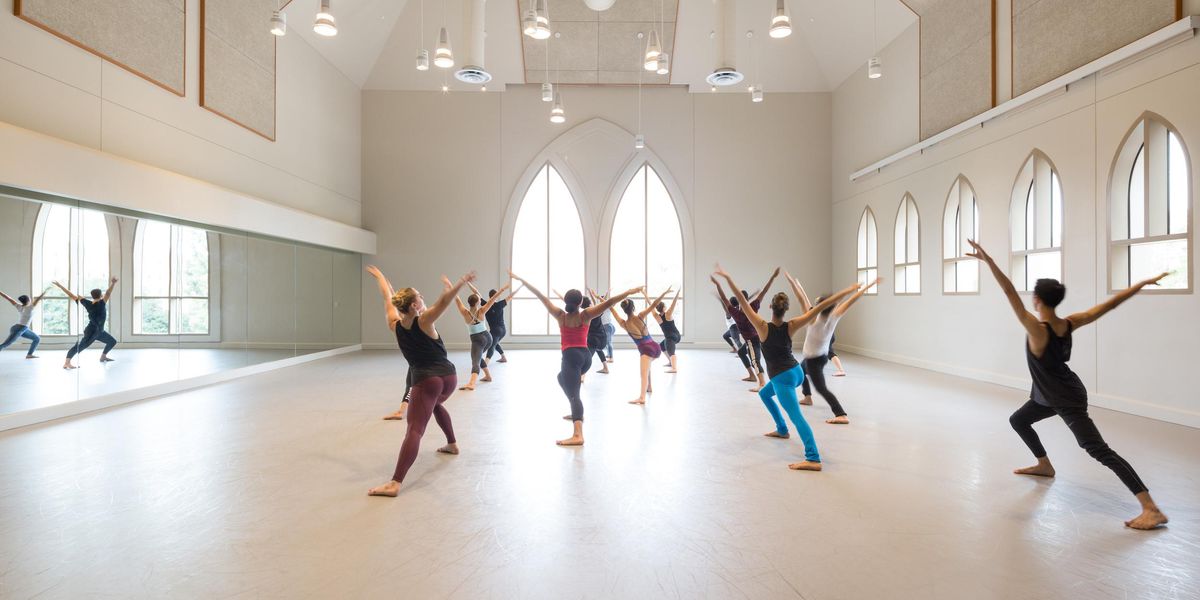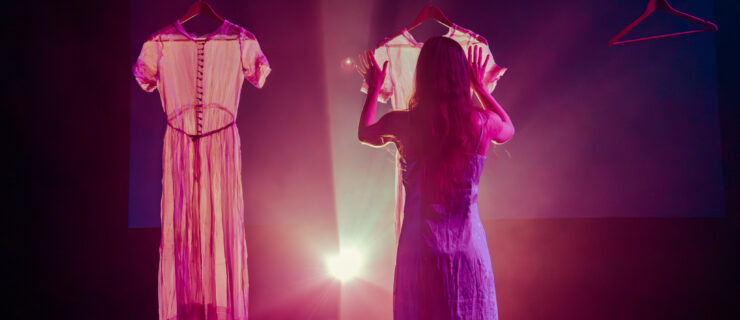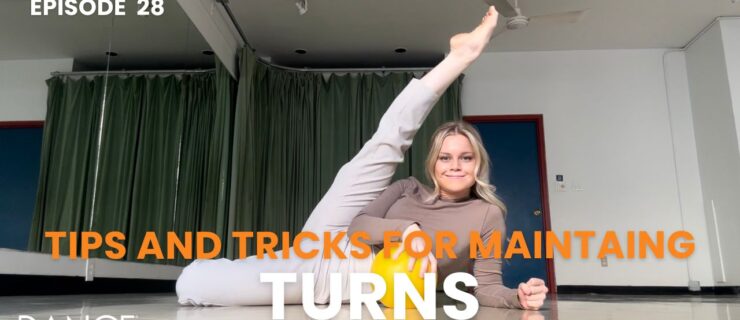Misha's World
Baryshnikov dreamed of a way to unite all the artistic disciplines. His new arts center makes it a reality.
There’s nothing about the drab, industrial-style gray building to alert passersby to the possibility that art may be incubating inside. In fact, passersby are scarce around 37th Street and Tenth Avenue in Manhattan—the traffic is mainly vehicular, making its way to the entrance to the Lincoln Tunnel. Yet this is where Mikhail Baryshnikov has set up shop, in custom-tailored space, to try to generate an arts scene. That, in a nutshell, is the long-term agenda of the Baryshnikov Arts Center, the first major venture undertaken by Baryshnikov’s foundation. Begun in the ’70s, the Baryshnikov Dance Foundation was a low-key operation that supported dancers and actors with small stipends and provided an umbrella for Baryshnikov’s always growing art collection.
“We didn’t have any money and we didn’t have any time,” Baryshnikov explained in an interview last fall in the conference room of his still unfinished three-story space. But in 2002, by disbanding his White Oak Dance Project, he gave himself the time; using it to tour and raise funds, he found the money.
And the Baryshnikov Arts Center, which shares 450 West 37th Street with the three commercial off-Broadway theaters on its three lower stories, had its official opening in November.
Unofficially, activities were already under way during the summer, with choreographers Tere O’Connor and Benjamin Millipied mentoring graduate students from New York University’s Tisch School of the Arts and Baryshnikov himself working on a new piece with Donna Uchizono. The idea is to grant residencies that bring together established artists and aspiring artists in film, theater, music, and dance (and also to offer subsidized rentals to non-profit projects). Helping to make these artistic matches is a panel of culture stars perhaps unparalleled for such a modest undertaking—the annual budget is expected to hover around $1.5 million. Baryshnikov has tapped dance world colleagues like Merce Cunningham, Trisha Brown, and Mark Morris to serve as advisers. But he’s also got playwright Sam Shepard, filmmaker Pedro Almodovar, stage director Peter Sellars, violinist Gidon Kremer, and photographer Annie Leibovitz, among others.
Baryshnikov’s longtime manager, Christina L. Sterner, oversees this newly hatched enterprise from an expansive window-lined office with commanding views of the Hudson River and the southern tip of Manhattan. Baryshnikov’s office, tucked into the upper corner of a sixth-floor studio like an afterthought, has views of the rehearsal space below—screened at the moment by a painted drop from Forbidden Christmas, the innovative Rezo Gabriadze theater piece that Baryshnikov toured with in 2004. If there are souvenirs from his other recent acting gig, a running role as Carrie’s artist boyfriend on Sex and the City, they weren’t evident. What is noticeable is the line-up of photographs, drawings, and prints, all from his collection, waiting to be hung. “He needs to be surrounded by art,” Sterner said, as she guided me through the striking spaces. And while he didn’t use quite those words in our conversation, that was the implication as he discussed his latest move. Full of surprises as always, this former ballet nonpareil, company manager, and contemporary dance missionary turned the tables on his visitor and asked the first question.
Mikhail Baryshnikov: Why does
Dance Magazine have interest in this? There’s nothing to do about dance here.
Sylviane Gold:
Maybe so, but Dance Magazine will always be interested in what you’re doing.
MB:
[sighing loudly] OK. Actually, it’s not true, what I just said. It’s just dance is part of other elements here.
SG: And that prompts my first question: Why are you doing this?
MB:
It’s my playground, I guess. I need one. I wanted one for a long time. My foundation and my production company were gypsies for many, many years, with office here, office there, office in Philadelphia, office in New York. Working with White Oak, we were often in Florida, and we were relying on kindness of friends. And renting places all over town—sometimes we would be rehearsing in three different places in one day.
SG: I’m sure this isn’t one of the neighborhoods you came to.
MB:
This is really the last frontier, in terms of real estate. It’s amazing spot. Historic spot, too. Hell’s Kitchen: writers, poets, hoodlums. It’s wonderful, wonderful spot, and I feel very much at home.
SG: Because of the poets or because of the hoodlums?
MB:
Both.
SG: But this is more than just a home base for you. What do you want to accomplish?
MB
: It’s a bit utopic—probably the whole idea is answer to people with whom I worked on “PASTForward,” the Judson group. I admire those people, and the non-commercialism of ’60s and the collaborative tendencies—sorely missed right now, in our country, at least. The idea is to stir up a bit of a ground for get-together and hang-out for young artists, graduate students, and young professionals. Really, any kind of artist, no matter how well-known or successful. Because people do enjoy that access to the young talent—it’s a two-way street. It’s a bit of socialist idea, I guess. I don’t think it will hurt—a touch of socialism in this country—right now, especially. But so far, it’s just a shell. We’ll see what fills it.
SG: What’s behind the move into a structure? The last time we talked, you were performing in California, and you said you liked being a gypsy.
MB:
We change with age. It’s normal. I wanted to be closer to my kids. They’re in their teens now; and I have two grandchildren. When you’re young, it’s all me, me, me. Now at this age, it’s your children— their life becomes your life, and your life becomes their life. No separation. And in a way this project is a comeback to the city—I’m rediscovering New York. Like when you fall in love sometimes with the same woman. And I feel that I can contribute something. Not much maybe, because it’s a pilot thing. I don’t want to do anything colossal. Life is too short, and the city’s too big; this country’s enormous. But if I can get second opinion to certain people and open a few doors for some people, that will be plenty. Because everything else in my life now, it’s kind of icing on the cake. I don’t have to work for a living, or prove anything to myself or anybody else. I am doing this—it’s like cooking a nice dinner. If you cook a nice dinner, you’ll eat a nice dinner. If you don’t want spend time and get proper ingredients, well, go to McDonald’s.
SG: You sound more like a producer now than an artist.
MB:
This transition emerged several years ago. I’m more interested in other people’s work than in my own. Not that I’m not having fun in the studio—I’m having a great time now working with a couple of projects quietly. But I am much more excited to see somebody else’s work when it happens first time—being on the sideline. I guess I am voyeur by nature.
SG: But you’re not really on the sidelines here.
MB:
On this project, I am a cheerleader. I start this thing and I’m in the process now to get my people in the same boat. Me personally, I won’t be involved in everyday operation—I cannot be involved. I can set up certain directions and I can set up certain programs, gear it up for a few years and see how it works. I think any good foundation should function without its founder. Because I will spend a few months doing my own projects, not necessarily here—I will tour maybe, go to Europe, work with some people there, travel for a few weeks here and there. But I know I’ll have right over there [pointing towards the offices next door] my group, and I’ll be in touch with them.
SG: So you’re not going to stop performing?
MB:
I’m back in shape to dance whatever I will choose to dance. We’ll see. I want to keep it narrow for a while.
SG: Are you going to class?
MB:
Yes, yes—every day.
SG: Is it hard on you?
MB:
It’s harder and harder, of course. And I don’t have to do Giselle tomorrow. But still I feel I can do the material which I’m doing now. I’m in good shape.
SG: So I was wrong when I said you were making a transition from being an artist. You still see yourself as a dancer.
MB:
Of course. Of course. Of course.
SG: Do you see that changing ever?
MB:
It might. I might just say, “I don’t think I will go onstage anymore.” Or I’ll have such unpleasant experience that I will say, “Enough!”—I’ll have hands full with this [gesturing around the room]. But so far it’s been exciting and very challenging.
SG: How are the knees doing?
MB:
Good. Good.
SG: You’ve had several operations. What do you do to avoid further damage?
MB:
I work with a physiotherapist. You have to keep your focus and listen to your body and not be stupid. When you’re working, don’t push yourself too much.
SG: So I guess you’re not ready for a replacement?
MB:
A joint replacement? Not yet. I need maybe a serious lobotomy. But really, you just have to be smart about it. Sometimes you send your body messages, “You can do that.” No, no, no, no, no, no. You can not do that—that was 25 years ago! If the choreographers understand your limitations, then it’s still fun. You just set up a certain horizon, and you’re not going above that, and you dance full out. When you see your footage dancing 30 or 40 years ago, it is not your body. It was a different body. Because the body, from purely medical point of view, it’s always changing. After 30 years, 40 years, it’s a different person.
SG: But do your muscles still remember the ballets you danced then?
MB:
Of course, I can fake it. But I have a very bad choreographic memory. I have generally bad memory. I have a great memory of music, and pretty good memory of poetry. But text, telephone numbers, choreography—certain things—pffffft [with a sweep of his hand]. I can learn a piece, and two weeks later I have to do it again, I have to spend another week to dance it. It is my curse and my salvation: I cannot always try to do it fresh, because I cannot remember what it is [laughing].
SG: You’ve said in the past that you didn’t expect to live a very long life, given your family history. But this project willtake many years to bear fruit. Are you feeling more optimistic about how long you’ll be around?
MB:
I don’t think so. It’s definitely last page—last chapter, let’s say. Not last page yet, but very few pages left. The last chapter gets thinner and thinner. That’s a rule of life. I’m not doing this for myself, that’s for sure.
Sylviane Gold has written about dance and theater for
Newsday and The New York Times.




